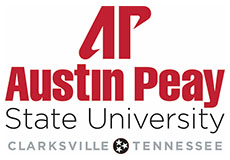 Clarksville, TN – Inside a simulation room at Austin Peay State University (APSU), senior criminal justice major Nathan Robertson locked eyes with an AI-generated suspect whose story was already unraveling.
Clarksville, TN – Inside a simulation room at Austin Peay State University (APSU), senior criminal justice major Nathan Robertson locked eyes with an AI-generated suspect whose story was already unraveling.
Leaning forward and adjusting his VR headset, Robertson pressed harder, using the confrontational Reid technique he learned in class. Minutes later, the suspect broke, confessing to armed robbery and naming his accomplice.
Although the interrogation was virtual, the skills Robertson and his classmates gained were very real. The exercise was part of a larger effort to integrate VR into the Department of Criminal Justice and gave students a chance to question suspects without leaving campus.
“Part of my teaching philosophy is experiential learning, so I want to have them actually try and use the interrogation techniques they’ve learned in the textbook,” said Dr. David Kim, assistant professor of criminal justice. “Without VR, it would be very difficult for them to get that experience of going into the interrogation room and talking to a suspect.”
The simulations were made possible through the Woodward Library’s Makerspace, which provided the department with five Ovation software licenses. The program allows users to interact with AI-powered avatars in various speaking situations and includes suspects with different personality types across multiple crime scenarios.
“Hands-on experience with tools like Ovation gives students the chance to practice real-world skills in a customizable, immersive setting where the stakes are low,” said Deanna Sherry, the library’s Makerspace team lead. “It helps them build confidence and feel more prepared for situations like interviews or public speaking.”

Sherry introduced the Department of Criminal Justice to Ovation when they visited the Makerspace to learn about VR configuration, and the software proved to be a natural fit for Kim and his students.
“I was on active duty in the Army for four years, and I’ve found that experience is always the best type of training,” said Robertson, now a staff sergeant with a military police unit in the Army Reserve. “I appreciate getting to do a simulation like this because it’s given me more perspective on how people might react to different interrogation techniques, and it made me feel more comfortable with the process.”
While Robertson used the Reid technique to create a high-pressure environment, junior criminal justice major Dalton Baughman used the PEACE method to connect with a suspect in a domestic violence scenario.
“This was my first time conducting an investigation, and it was important to be able to use what we’ve learned in a more realistic setting,” said Baughman, who aims to work for the Tennessee Bureau of Investigation and eventually join the FBI. “People’s emotions and psychology show in their eyes, movement, and everything they do. It’s really interesting how often you can tell when a person is lying by watching them.”
The Department of Social Work provided simulation space for the exercise in APSU’s new Health Professions Building, which was designed to promote collaboration between academic programs.
“We’ve only been in this building for a few months, and we’re really focused on figuring out how best to bring people together,” said Dr. Phillip Mongan, chair of the Department of Social Work. “Some of that is just having people come over here and experience the space – that helps us see what we can do in the future.”
In the future, the two departments plan to hold joint simulations involving scenarios such as domestic violence cases and child welfare visits, where social workers and criminal justice professionals often collaborate.
“The police need to be there [in those situations] because there’s a safety issue,” Mongan said. “But a social worker is trained to dig in and ask questions in a way that’s different, because our role is different. That can help uncover important information to support a criminal investigation.”
During his simulation, Baughman saw firsthand how deeper questioning can lead to crucial information.“I was able to figure out what went down on the scene and what happened before the officers came and stopped it,” Baughman said. “That gave me enough information to determine whether it was domestic assault or self-defense … it was a very helpful experience, and I think everybody should try it.”
After seeing the value of the experience for students like Baughman and Robertson, Kim knew he wanted to build on its success.
“I’m going to continue doing this exercise as part of my curriculum for Criminal Investigations each semester,” he said. “I’m very thankful to the library for providing us with the software, and to the Department of Social Work for providing us with this space.”



